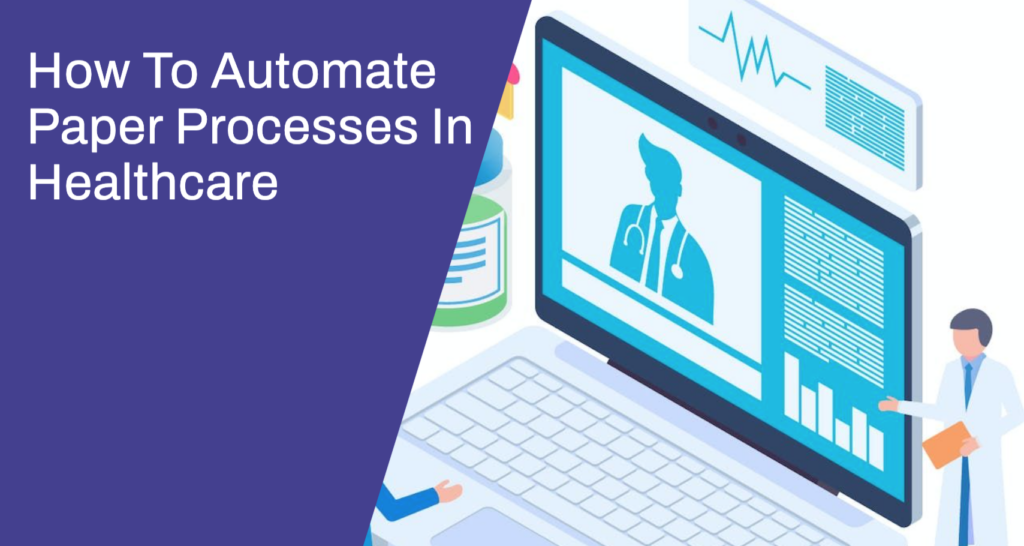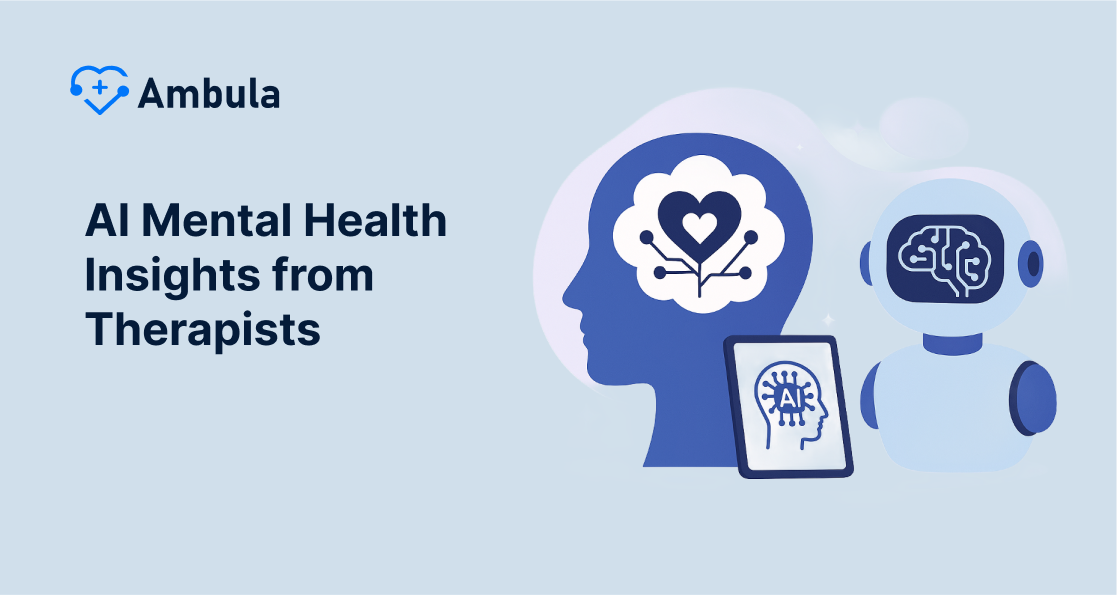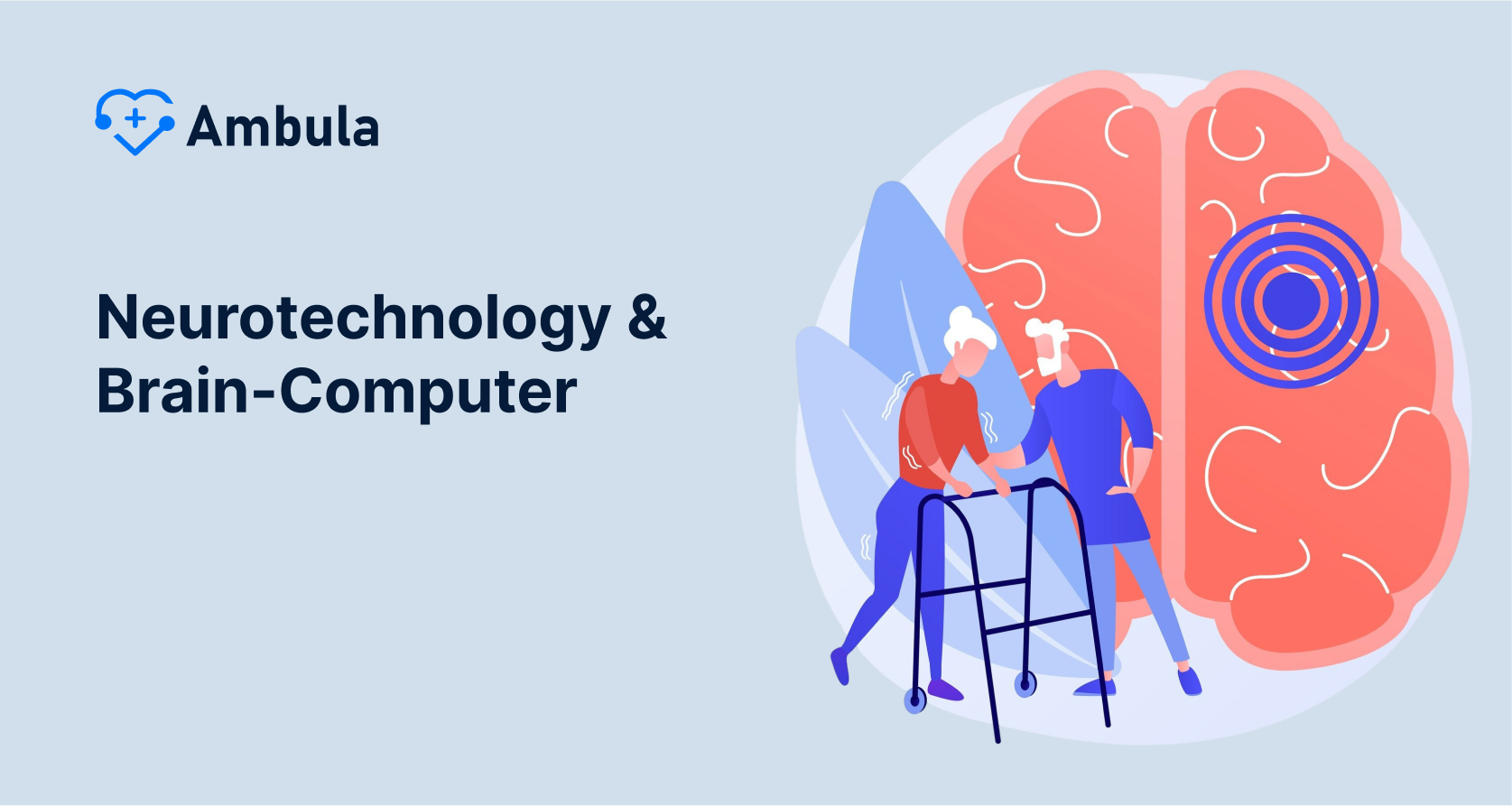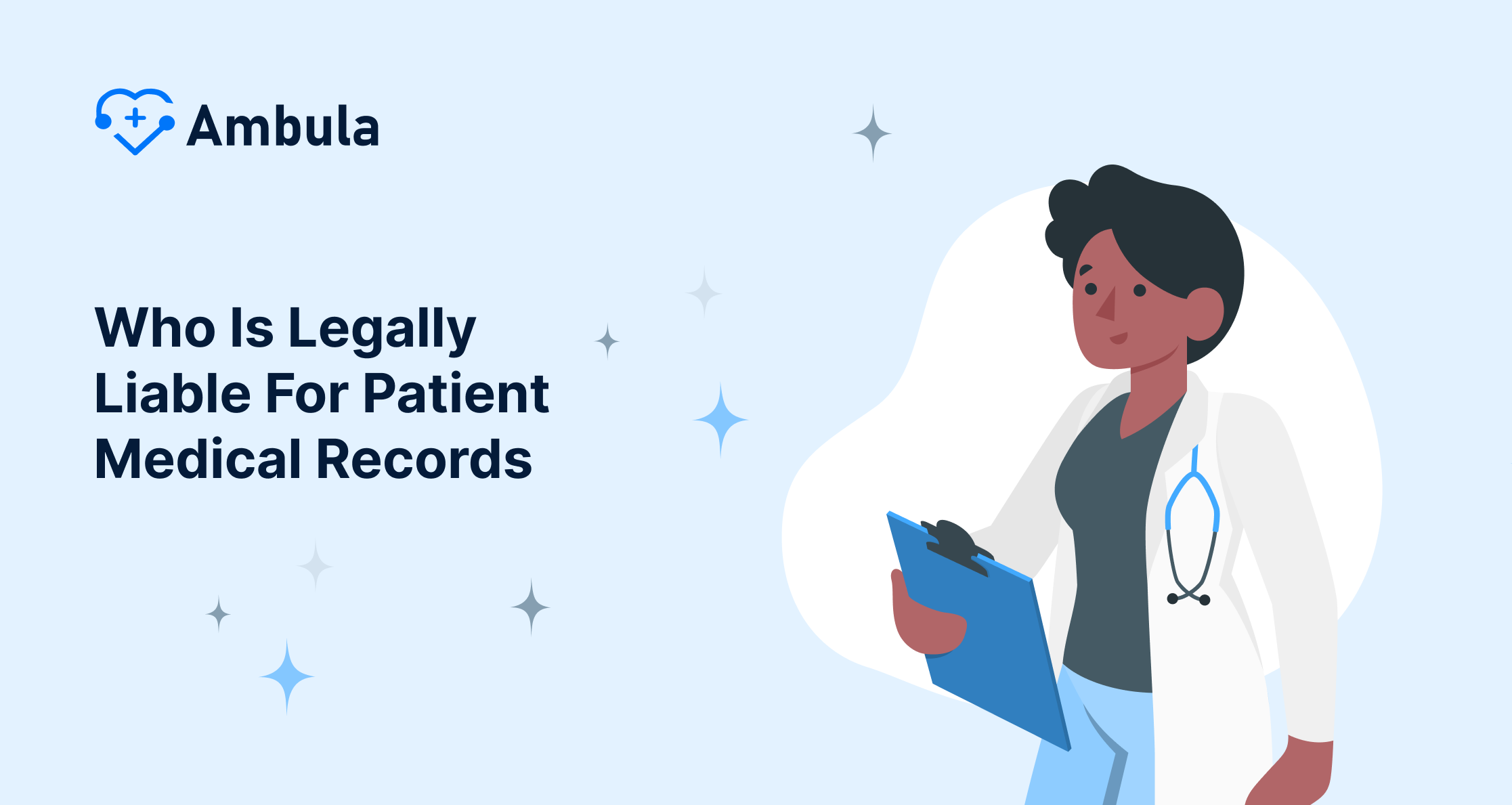In today’s rapidly evolving healthcare landscape, the need for streamlined operations and optimized patient care has never been more pressing. As medical facilities grapple with mounting volumes of data, manual documentation processes have become increasingly cumbersome, hindering productivity and compromising the quality of service delivery. Automation in healthcare can effectively address these challenges.
Envision a scenario where a patient’s medical history is scattered across multiple healthcare providers, each with their own paper-based record-keeping systems. The potential for miscommunication, delays, and even medical errors is alarmingly high, jeopardizing the very foundation of patient-centric care. Healthcare document automation can mitigate these risks significantly.
This concerning reality begs the question: How can healthcare organizations break free from the shackles of antiquated, paper-driven workflows and embrace the transformative power of automation?
The Solution: Automation & Benefits
We’ve painted a grim picture of healthcare’s struggle with paper-based processes, highlighting the inefficiency, errors, and frustration they generate. But fear not, for there’s a potent antidote on the horizon: healthcare automation.automation.
Imagine automation as a digital superhero swooping in to vanquish the paper villain. By leveraging technology, we can streamline workflows, enhance accuracy, free up valuable time, and ultimately create a more positive experience for healthcare professionals and patients. The benefits of automation in healthcare are truly transformative.
We’ve established that automation is healthcare’s knight in shining armor, ready to slay the dragon of paper-based processes. But let’s dive deeper and see how automation translates into tangible benefits for everyone involved in the healthcare industry.
- Faster Approvals, Smoother Sailing
- Reduced Errors, Enhanced Safety
- Data at Your Fingertips
- Reduced Staff Burnout
- Increased Transparency
- Improved Cost Efficiency
The advantages of automation are far-reaching, impacting not just individual processes but the entire healthcare ecosystem. It’s not just about saving time and money; it’s about creating a system that is faster, safer, more patient-centered, and ultimately, healthier for everyone. The benefits of automation in healthcare are undeniable.
Identifying Opportunities
Think about the patient’s journey. Is onboarding bogged down with mountains of forms and physical signatures? Is appointment scheduling a dance of phone calls and handwritten notes? Do insurance claims get lost in a labyrinth of paperwork? If these scenarios sound familiar, you’ve identified fertile ground for healthcare process automation.
But don’t stop there. Look beyond the obvious. Are medication orders still handwritten? Are lab results delivered physically instead of electronically? No matter how small, every paper-based touchpoint presents an opportunity for streamlining and efficiency gains through healthcare process automation.
Remember, the goal is to identify processes that drain time, create bottlenecks, and leave room for error. So, channel your inner detective and don’t be afraid to dig deep. The paper trail might just lead you to hidden inefficiencies waiting to be transformed by the power of paper-based processes automation in healthcare.
Technology Tools & Solutions
We have an arsenal of powerful automation tools in our fight against healthcare’s paper tyranny. Let’s explore some of the key players in automation in healthcare and healthcare automation solutions:
1. Robotic Process Automation (RPA)
Imagine tireless digital assistants mimicking human actions. RPA bots automate repetitive tasks across different software platforms, mimicking clicks, keystrokes, and data entry.
Use Cases:
- Appointment scheduling: Bots can automatically manage appointment scheduling, send reminders, and update calendars.
- Claims processing: Repetitive tasks like data entry and verification in insurance claims are handled quickly and accurately, enhancing medical billing and document processing.
- Data migration: Moving data between different systems becomes effortless, with RPA bots handling the heavy lifting, especially when dealing with electronic medical records.
2. Document Management Systems (DMS)
Imagine a digital filing cabinet, organized and accessible. DMS centralizes document storage, retrieval, and management, eliminating physical clutter and streamlining access.
Use Cases:
- Patient records: Securely store and manage patient records electronically, enabling easy access for authorized personnel and ensuring efficient handling of electronic medical records and patient data.
- Compliance documents: Organize and track mandatory documentation for audits and regulatory compliance.
- Contract management: Securely store and manage contracts with vendors and partners, simplifying retrieval and renewal processes.
3. Workflow Software
Imagine a digital conductor orchestrating processes. Workflow software defines, automates, and manages complex workflows, ensuring tasks are completed efficiently and in the right order, contributing to workflow optimization.
Use Cases:
- Patient onboarding: Automate patient registration, insurance verification, and appointment scheduling, creating a smooth onboarding experience through optimized patient intake and workflow optimization.
- Medication management: Automate medication orders, approvals, and dispensing, minimizing errors and ensuring patient safety.
- Referral management: Streamline the referral process with automated notifications, tracking, and communication with specialists.
4. Chatbots
Imagine a 24/7 virtual assistant answering patient questions. Chatbots provide automated responses to frequently asked questions, offering basic information and support and freeing up staff for more complex inquiries.
Use Cases:
- Appointment scheduling: Patients can schedule appointments, reschedule, or get reminders through chatbot interactions.
- General inquiries: Chatbots can answer basic questions about clinic hours, services offered, and billing procedures.
- Medication reminders: Chatbots can send automated reminders to patients to adhere to their medication schedules.
5. Intelligent Data Extraction (IDE)
Imagine extracting valuable insights from mountains of data effortlessly. IDE uses artificial intelligence and machine learning to automatically extract and analyze data from unstructured documents like forms, scans, and reports, enhancing data analytics capabilities.
Use Cases:
- Medical records analysis: Extract relevant information from patient records to assist diagnosis, personalized treatment plans, and identify potential risks using artificial intelligence for personalized medicine.
- Claims processing: Automate data extraction from claim forms, reducing manual entry errors and accelerating processing times.
- Research and development: Extract and analyze data from clinical trials and research papers to accelerate medical advancements through artificial intelligence, data analytics, and drug discovery.
By understanding each tool’s strengths and applications, you can create a customized automation strategy that addresses your specific needs and challenges. Remember, healthcare automation solutions are not one-size-fits-all. Choose the tools that empower your healthcare practice to achieve new levels of efficiency, accuracy, and patient-centered care.
Overcoming Challenges & Best Practices
While automating paper-based processes in healthcare holds immense promise for efficiency and accuracy, it’s not without its challenges. Here are some key hurdles to consider:
Data Integrity and Security: Transforming paper records into digital form requires meticulous data entry and conversion. Errors in this process can lead to inaccurate patient information, impacting diagnosis, treatment, and billing. Additionally, securing sensitive medical data in digital systems demands robust cybersecurity measures to prevent breaches and leaks, ensuring data security for patient data.
Technology Hurdles and Costs: Implementing automation requires significant hardware, software, and training investments. Integrating new systems with existing legacy ones can be complex and costly. Moreover, ensuring compatibility and interoperability across different healthcare providers and institutions remains an ongoing challenge in digital transformation and healthcare technology.
Human Resistance and Adoption: Shifting from paper-based workflows to digital ones can be met with resistance from staff accustomed to traditional methods. Effective change management strategies are crucial to address concerns, provide training, and encourage user adoption.
Ethical Considerations: Automating tasks raises ethical questions about data privacy, algorithmic bias, and the potential for job displacement. Balancing automation with human oversight and ensuring transparency in decision-making processes is vital.
Regulatory Compliance: Healthcare data is subject to strict regulations, and ensuring compliance with these regulations in automated systems requires careful planning and ongoing monitoring to maintain data security.
Unforeseen Issues: As with any new technology, unforeseen challenges can arise. Healthcare systems must be prepared to adapt and troubleshoot issues that may emerge during implementation and operation.
Despite these challenges, the potential benefits of automating paper processes in healthcare are undeniable. By carefully considering these hurdles and implementing solutions proactively, healthcare providers can navigate the transition toward a more efficient, accurate, and secure future through healthcare automation.
Real-World Examples & Case Studies
While acknowledging the challenges, the potential of automation in healthcare shines through in numerous success stories. Here are some concrete examples with measurable results of healthcare automation:
- Cleveland ClinicAutomating patient registration reduced wait times by 50%, saving 60,000 patient hours annually. Additionally, electronic medical records (EHRs) improved medication reconciliation accuracy by 20%, potentially preventing adverse drug reactions.
- University of Pittsburgh Medical Center (UPMC)Automating patient scheduling cut scheduling time by 30% and increased appointment availability by 25%. Additionally, automating insurance verification reduced administrative costs by $1.5 million annually, showcasing significant cost savings and improved staff productivity.
- Christiana Care Health System: Implementing robotic process automation (RPA) for claims processing reduced turnaround time by 70% and error rates by 50%. Moreover, the system saved 20,000 staff hours annually, allowing them to focus on patient care, enhancing both medical billing efficiency and staff productivity.
Remember, these organizations didn’t just jump into automation blindly. They carefully assessed their needs, selected the right tools, and implemented them focusing on stakeholder buy-in and change management. So, take inspiration from these shining examples, learn from their experiences, and embark on your own journey to automate your healthcare practice and unlock a future of efficiency, accuracy, and patient-centered care through healthcare automation.
The Future of Automation in Healthcare
Imagine a world where healthcare professionals aren’t bogged down by paperwork, drowning in administrative tasks, and fighting with frustrating systems. Automation paints this very picture, empowering them to reclaim their time and focus on what truly matters – their patients, all while moving towards a paperless healthcare system.
By automating repetitive tasks like scheduling appointments, managing claims, and processing data, healthcare professionals are freed from the administrative burden. This translates to improved staff productivity and more time for direct patient care, showcasing the benefits of healthcare automation.
- More Time for Patient Care
- Enhanced Quality of Care
- Improved Patient Engagement
The benefits extend beyond efficiency gains. Automation fosters a more positive work environment for healthcare professionals. Reduced stress, increased job satisfaction, and the ability to dedicate their expertise to direct patient care all contribute to a happier, more engaged workforce, resulting in a healthier environment for everyone involved. This highlights the importance of automation in healthcare for enhancing patient satisfaction and staff productivity.
Automation isn’t about replacing healthcare professionals; it’s about empowering them. By embracing this technology, we can rewrite the healthcare narrative, shifting the focus from paperwork to patients, from burden to quality care, and ultimately, building a healthcare system that is efficient, patient-centered, and a true advocate for everyone’s well-being. Automation in healthcare is key to achieving these goals and improving patient satisfaction.





